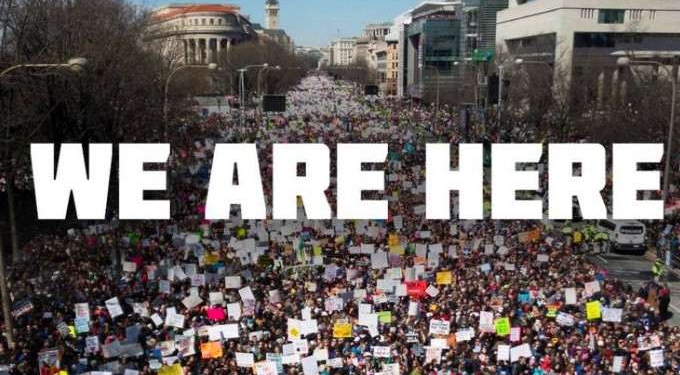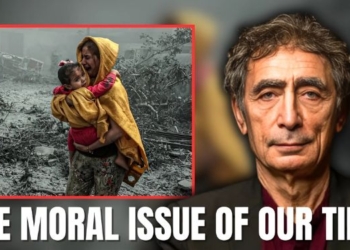
By Julia Conley | Common Dreams
As protests demanding common-sense gun control reforms began across the country on Saturday, hundreds of thousands of students, parents, teachers, and other advocates flocked to the March for Our Lives in Washington, D.C., as well as demonstrations in hundreds of other cities and towns.
“The mission and focus of March For Our Lives is to demand that a comprehensive and effective bill be immediately brought before Congress” to address the gun violence and presence of assault weapons that critics say has become far too prevalent in schools as well as neighborhoods and public spaces across the country, according to the mission statement on the March for Our Lives official website.
Reforms that students and their supporters have advocated for include bans on high-capacity ammunition magazines and military-style semi-automatic weapons like the AR-15, setting a minimum age requirement of 21 to purchase firearms, and strengthening background checks and closing loopholes that allow people to easily buy weapons.
The protests come 38 days after the mass shooting at Marjory Stoneman Douglas High School in Parkland, Fla., where 17 people were killed by a gunman with an AR-15. The shooting was just the most recent in a long string of deadly attacks in recent years at schools, churches, and other public spaces—but it has marked a significant shift in the chain of events that's generally followed such events.
The young survivors of the attacks mobilized immediately to advocate for change—forming the #NeverAgain movement, rejecting the “thoughts and prayers” offered by politicians who have taken millions of dollars in donations from powerful gun rights groups like the National Rifle Association (NRA), demanding to speak about proposed reforms with their elected officials, and organizing nationwide protests.
The March for Our Lives is second major action the teenagers have organized. On March 14, students across the country walked out of their classrooms in protest of lax gun regulations; a second walkout is planned for April 20—the 19th anniversary of the deadly school shooting at Columbine High School in Littleton, Colo.
Hours before the marches began, the Department of Justice moved to ban bump stocks, which allow semi-automatic firearms to operate as automatic guns, firing multiple rounds quickly. The mechanism was used in the shooting that killed 58 people in Las Vegas last October. The DOJ's move was taken by some as a sign of the power of the student-led pro-gun control movement.
https://twitter.com/peter_masiakos/status/977313072753803270?ref_src=twsrc%5Etfw&ref_url=https%3A%2F%2Fwww.commondreams.org%2Fnews%2F2018%2F03%2F24%2Fstudents-march-demand-gun-control-reforms-washington-dc-and-across-nation&tfw_creator=commondreams&tfw_site=commondreams
Also on Friday, Parkland survivors spoke at a Washington, D.C. high school about the need to include communities of color in the fight for gun control reforms.
“The media focus on school shootings can oftentimes be biased towards white, privileged students. Many [African-American] communities are disproportionately affected by gun violence, but they don't get the same share of media attention that we do,” said David Hogg, a student at Marjory Stoneman Douglas High School.
The students' remarks followed calls to address ongoing concerns about police violence in black communities as part of the #NeverAgain movement.
The conversation about gun violence must include police killings of unarmed civilians
— Ben Jealous (@BenJealous) March 22, 2018
https://twitter.com/BlairImani/status/976685149814476800?ref_src=twsrc%5Etfw&ref_url=https%3A%2F%2Fwww.commondreams.org%2Fnews%2F2018%2F03%2F24%2Fstudents-march-demand-gun-control-reforms-washington-dc-and-across-nation&tfw_creator=commondreams&tfw_site=commondreams
In addition to Saturday's main event in Washington, D.C. and “sibling marches” in American cities, protests were staged in many cities around the world—including Tokyo, Sydney, Geneva, and Mumbai—where supporters marched in solidarity with U.S. students.
















